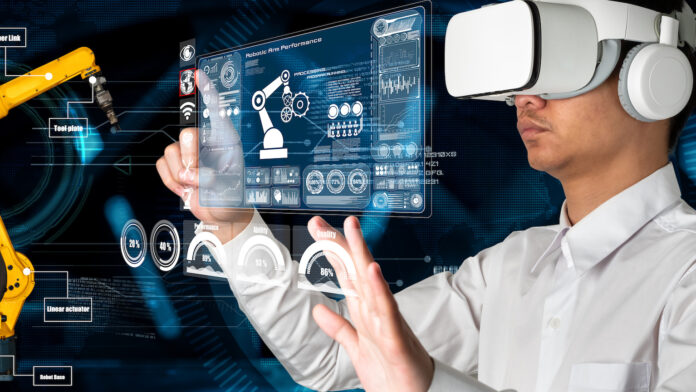In recent years, technological advancements have led to significant transformations in the way we live, work, and interact with the world around us. One of the most exciting and promising developments in this regard is the rise of augmented reality (AR). Augmented reality is a technology that superimposes virtual elements onto the real world, seamlessly blending the physical and digital realms to create an enhanced and immersive user experience. With its potential to revolutionize various industries and aspects of our daily lives, augmented reality is poised to be the next major technological shift.
AR has made significant strides in recent years, primarily due to the proliferation of powerful smartphones and tablets, as well as the development of advanced AR software and hardware. These advancements have made it possible for users to access augmented reality experiences through their mobile devices, eliminating the need for specialized equipment or dedicated AR headsets. This accessibility has played a crucial role in the widespread adoption and integration of AR into various industries.
One of the most notable areas where augmented reality has made significant inroads is in the realm of entertainment and gaming. Popular games such as Pokémon Go demonstrated the immense potential of AR by overlaying virtual creatures onto real-world environments, encouraging players to explore their surroundings in search of these digital creatures. This fusion of the real and virtual worlds created a truly interactive and engaging experience, capturing the imagination of millions of players worldwide.
But the impact of augmented reality extends far beyond the realm of gaming. Industries such as retail, education, healthcare, and manufacturing have begun to harness the power of AR to enhance their operations and improve user experiences. In the retail sector, for instance, AR enables customers to try on virtual clothing or visualize furniture and home decor in their living spaces before making a purchase. This not only enhances the shopping experience but also reduces the number of returns, as customers can make more informed decisions based on accurate representations of products.
In the field of education, augmented reality has the potential to transform the way students learn and engage with educational content. By overlaying interactive and 3D visualizations onto textbooks or real-world objects, AR can make learning more immersive and engaging. Students can explore virtual models of complex concepts, conduct virtual experiments, or even interact with historical figures, bringing subjects to life in ways that were previously unimaginable.

Augmented reality also has significant implications for healthcare. Surgeons can use AR to overlay medical images and patient data onto their field of view during procedures, providing real-time guidance and improving surgical accuracy. Additionally, AR can assist in training healthcare professionals by simulating medical scenarios and allowing them to practice complex procedures in a risk-free environment.
The manufacturing industry has also recognized the potential of augmented reality to streamline processes and improve efficiency. By overlaying digital instructions or schematics onto physical equipment, AR can assist workers in assembling complex machinery or performing maintenance tasks. This not only reduces the likelihood of errors but also accelerates training processes and minimizes downtime.
Beyond these specific industries, augmented reality is poised to transform the way we interact with the world on a daily basis. Imagine walking down the street and instantly receiving information about the buildings, landmarks, or businesses around you through your AR-enabled glasses or smartphone. Picture attending a conference or a live event and having real-time translations or subtitles seamlessly displayed in your field of view. With AR, the possibilities for enhancing our experiences and interactions with the world are virtually limitless.
While the rise of augmented reality presents exciting opportunities, it also brings forth certain challenges. Privacy concerns, for example, become more pronounced as AR technology collects and processes vast amounts of personal data. Ensuring the security and ethical use of this data will be essential to maintain trust and widespread adoption.
Furthermore, the development of robust AR experiences will require ongoing advancements in hardware capabilities, such as improved sensors, optics, and processing power. Companies and researchers are actively working on miniaturizing and optimizing AR devices to enhance user comfort and increase adoption rates.
In conclusion, the rise of augmented reality is transforming the way we interact with the world, offering immense potential across various industries and aspects of our lives. From entertainment and gaming to education, healthcare, and manufacturing, AR is enhancing user experiences, improving efficiency, and unlocking new possibilities. As technology continues to advance, it is crucial to navigate the ethical and privacy considerations while pushing the boundaries of what augmented reality can achieve. With its ability to seamlessly blend the physical and digital realms, augmented reality is undoubtedly poised to shape the future of human interaction in unprecedented ways.

